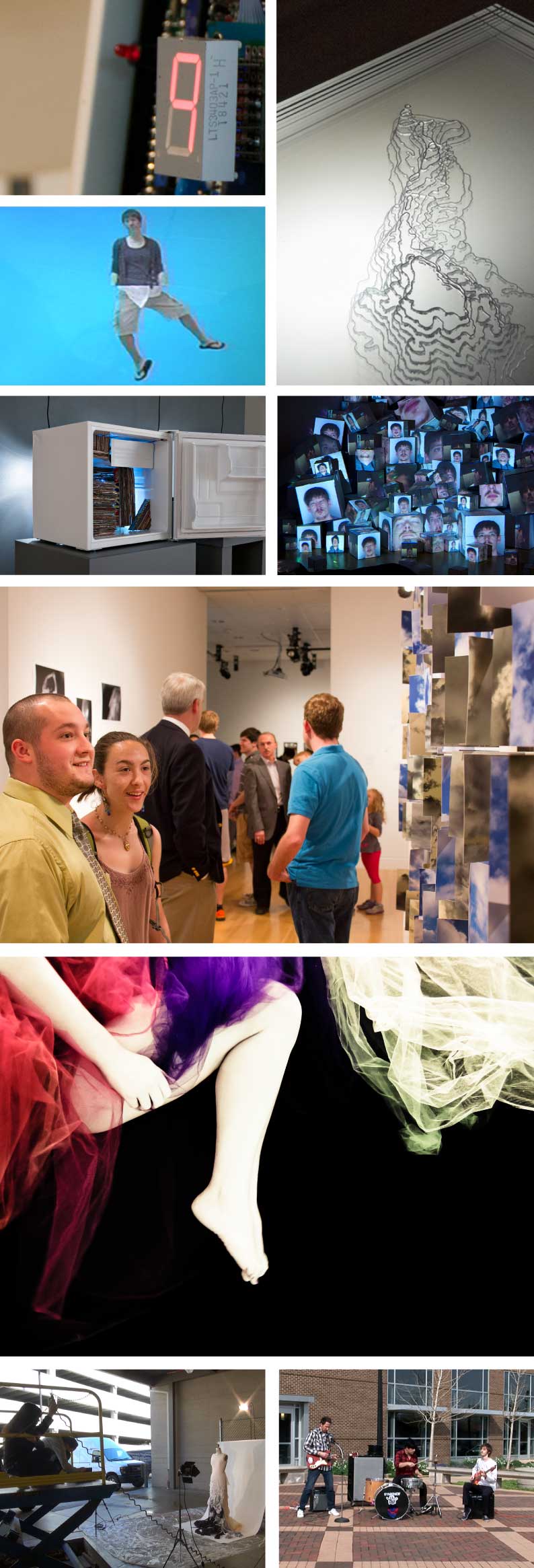
BFA | Art, Culture & Technology
Through interdisciplinary art practice and research, students in the Art, Culture and Technology (ACT) concentration bring together contemporary art, cutting-edge technologies and critical thought to imagine and create artifacts with cultural impact. Being located at a top-ranked comprehensive Research I university, well-known for its engineering and science disciplines, Art, Culture and Technology students have the opportunity to connect their work to a larger socio-technological discourse on campus and beyond and are encouraged to develop interdisciplinary ties to other areas of study within and outside of the College of Liberal Arts.
The Adaptive Creator
The goal of the Art, Culture and Technology program is not to develop experts in only one discipline but to help students to become specialists in flexibility with skills to adapt to the challenges of rapidly changing job requirements in the world of creative professions. Graduates of the ACT program may go on to continue their studies in MFA programs nationally or internationally or work as artists, educators, photographers, videographers, tinkerers, new media consultants, new media producers (in culture, entertainment and advertising industries).

Areas of Study
Electronic and Time-Based Art
In their research and art practice, ETB students explore the creative and expressive potential of electronic and time-based media such as digital video and sound, real-time computer graphics, interactive digital systems, virtual reality, physical computing and robotics. The goals of the program are to provide an interdisciplinary laboratory for the exploration and creation of new forms of art, the exchange of ideas and concepts across disciplines and the critical investigation of emerging technologies. The program’s curriculum promotes individual inquiry and collaboration across the different divisions and departments of the School of Visual and Performing Arts (such as Art & Design, Theater and Dance) as well as encouraging and supporting links to academic partners and resources outside of the school. These include, but are not limited to: the American Studies Program, the Envision Center for Data Perceptualization, the Department of Computer Graphics.
Photography and Related Media
Photography, since its invention almost two hundred years ago, has continued to gain importance not only as a means of artistic expression and visual stimulation but also as an unparalleled vehicle for communication. When words are not understood, the visual image speaks for itself. Purdue University's Department of Art and Design offers a well-rounded photography program that includes courses in black and white photography including film development and dark room printing, digital imaging, alternative processes, studio lighting, digital video and commercial practice in photography. Courses in the history of photography from its beginning until present day help new artists think and see in unique ways. The classes are designed to address the needs of students who seek to be working artists and those interested in commercial practice.
State of the Art Facilities
Students in the Art, Culture and Technology area have access to two fully equipped dedicated computer laboratories, a flexible reconfigurable multi-purpose space for larger-scale artistic experiments, dedicated photography laboratories; darkroom, digital photography lab and professional photography studio, equipment resources (DSLRs, video cameras, artificial lighting kits, tripods, sound recording devices and accessories) located within the department. Access to wood and metal shops as well as 3D printing, laser cutting and CNC routing equipment is also available.